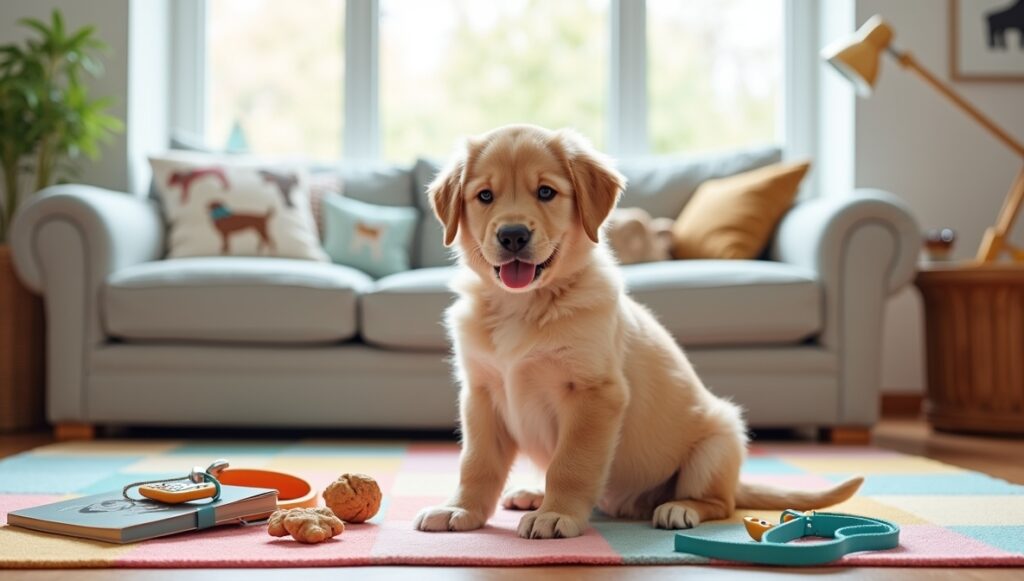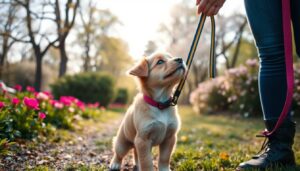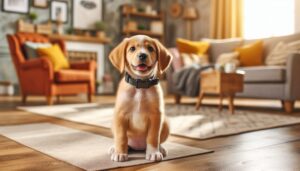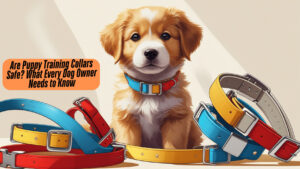Puppy training can feel overwhelming. Picture this: you’ve just brought your new furry friend home, and excitement fills the air. But then, mishaps happen. Endless accidents, little nibbles on furniture, and those adorable but mischievous behaviors make you question your choices. Fortunately, the journey can become much smoother with the right accessories. Having the right tools simplifies training, creating happier dogs and less stressed owners.
Choosing the Right Collar and Leash
Collar Types: Harness vs. Collar
Choosing the right collar or harness is crucial for successful training. Both options have pros and cons.
- Collars: Easy to use, great for ID tags, and suitable for most breeds. However, they can strain a puppy’s neck if they pull.
- Harnesses: Distribute pressure evenly, making them suitable for strong or small breeds. Yet, they can be tricky to put on and take off.
Statistics show that harnesses are preferred by 60% of dog owners, especially for training purposes.
Leash Selection
The length of your leash can impact training.
- Standard Leashes: Typically 4-6 feet long, ideal for basic obedience.
- Retractable Leashes: Great for letting your dog explore but can hinder recall training.
For recall training, a standard leash often works best. A method that incorporates a standard leash is the “stop and praise” technique, where you reward your puppy for staying close.
Fitting Your Puppy
Proper fit is essential to avoid injury. A collar should be snug but not tight, and you should be able to fit two fingers under it. A harness should allow for movement but not slip off.
Mastering Potty Training with Essential Accessories
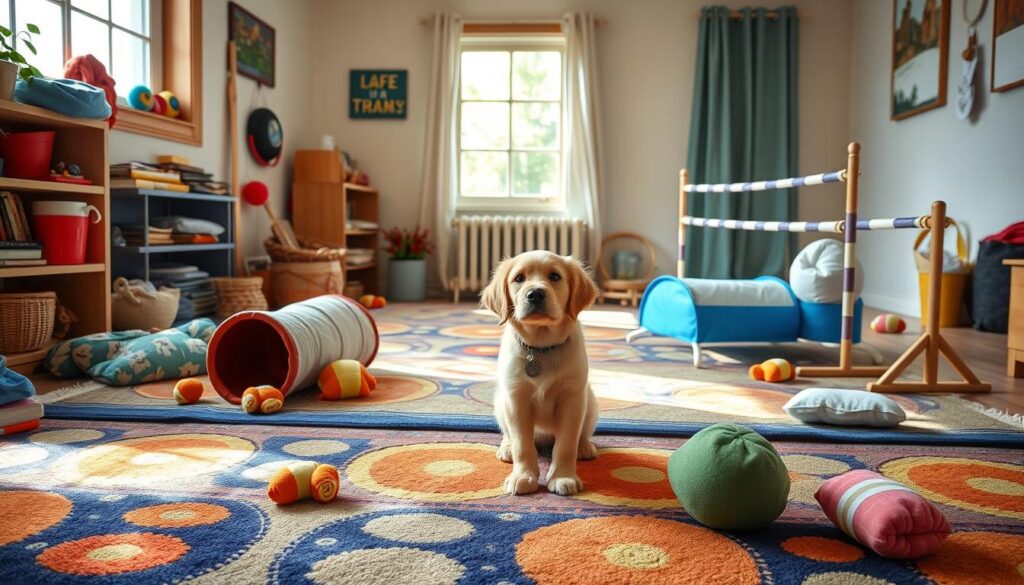
Puppy Pads
Puppy pads can ease the housebreaking process.
- Pros: Convenient, great for indoor training, and protect floors.
- Cons: Some puppies may begin to prefer them over outdoor potty training.
Studies reveal that using puppy pads can increase house training success by 20% compared to outside-only methods.
Enzyme Cleaners
Accidents happen. Enzyme cleaners are vital for removing odors and stains. They break down organic materials, helping to prevent your puppy from returning to the same spot. Brands like Nature’s Miracle and Simple Solution are popular and effective.
Positive Reinforcement Tools
Using treats and praise during potty training fosters positive behavior. Reward your puppy immediately when they go outside to build a connection between the act and the reward.
Harnessing the Power of Toys for Training
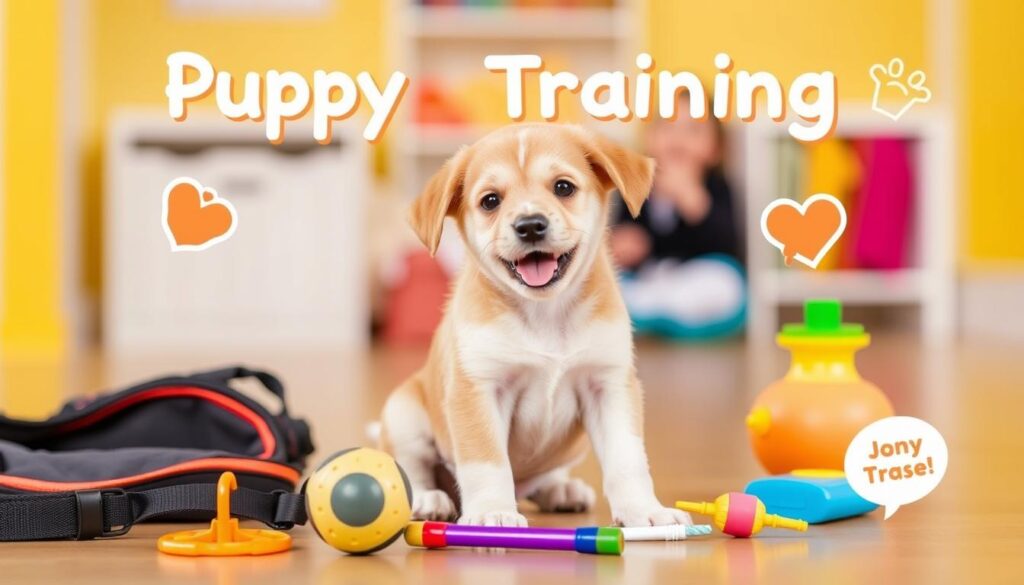
Interactive Toys
Interactive toys keep your puppy engaged and reduce boredom. Puzzle toys encourage problem-solving and can enhance training. The Outward Hound Hide-A-Squirrel toy is a great example, promoting both play and mental stimulation.
Training Treats
Choose treats that are small, soft, and easy to chew. Options vary based on your puppy’s size:
- Small Breeds: Mini biscuits or soft training treats.
- Large Breeds: Larger pieces or tougher treats.
Be mindful of portion sizes to avoid overfeeding while training.
Reward Markers
Clickers or verbal markers help reinforce good behavior. A quote from certified dog trainer Karen Pryor sums this up: “Clicking gives the dog a clear signal that they’ve done something right.”
Crate Training for Success
Choosing the Right Crate
Select a crate that matches your puppy’s size. It should be big enough for them to stand up and turn around but not too big that they can eliminate in one corner and sleep in another. Consider materials like metal or plastic based on durability and comfort.
Crate Training Techniques
Begin crate training by introducing the crate positively. Start with short periods and gradually increase the duration. Avoid using the crate as punishment. There’s a story of a dog owner who successfully crate-trained their puppy by making the crate a cozy space filled with toys and bedding, treating it like a safe den.
Crate Safety
Ensure that your puppy can’t chew any crate parts or escape. Safety precautions prevent injuries and make crate time comfortable.
Beyond the Basics: Advanced Training Accessories
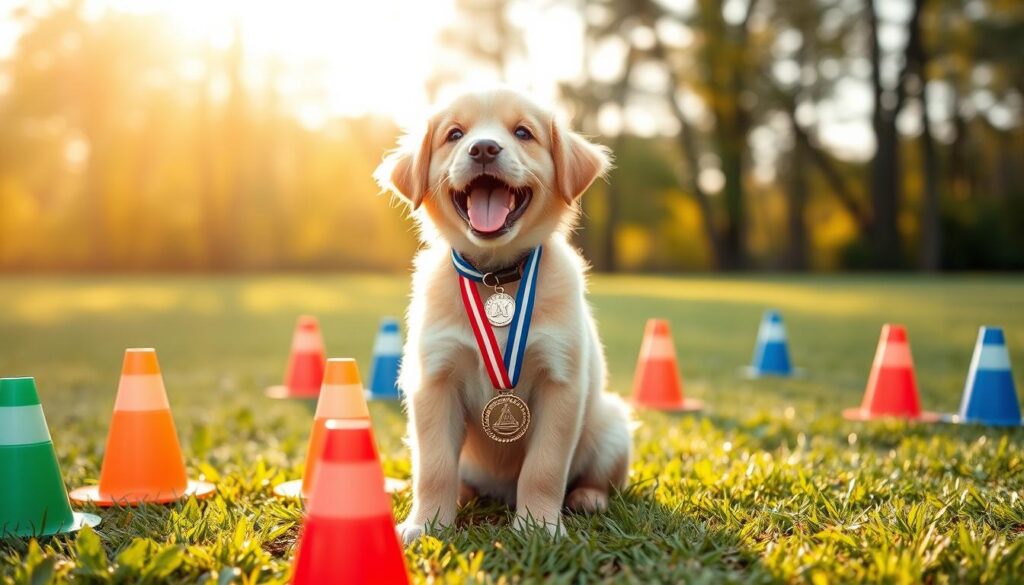
Long Lines
Long lines can be vital for recall training and allow dogs to explore safely while being controlled. They give your puppy the freedom to roam without fully letting go.
Dummy Training Aids
Dummies are excellent for retrieving training. Options include plush dummies for gentle play and rubber dummies for tougher tasks. Establish clear commands like “fetch” to guide your puppy.
Training Bags
Investing in a dedicated training bag keeps your essentials organized. Store treats, toys, clickers, and more for easy access during training sessions.
Conclusion
Proper accessories play a crucial role in puppy training. From the right collar and leash to effective potty training tools, having the right items simplifies the process. These tools not only benefit your puppy’s development but also create a more enjoyable experience for you as an owner. Invest in quality accessories and consider professional guidance to help you on this rewarding journey. Your puppy deserves the best training tools for a happier, healthier life.
